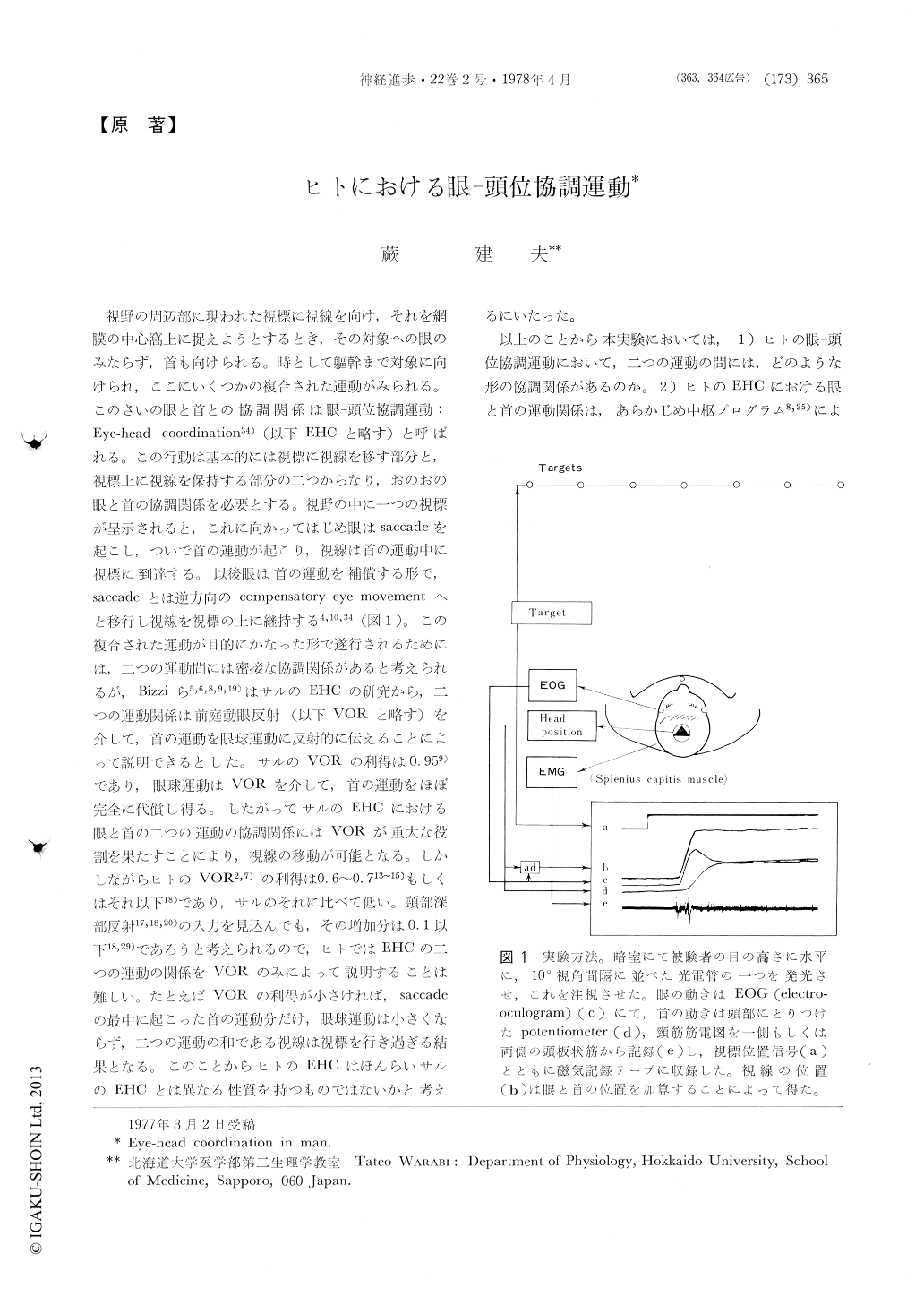Japanese
English
- 有料閲覧
- Abstract 文献概要
- 1ページ目 Look Inside
視野の周辺部に現われた視標に視線を向け,それを網膜の中心窩上に捉えようとするとき,その対象への眼のみならず,首も向けられる。時として躯幹まで対象に向けられ,ここにいくつかの複合された運動がみられる。このさいの眼と首との協調関係は眼一頭位協調運動:Eye-head coordination34)(以下EHCと略す)と呼ばれる。この行動は基本的には視標に視線を移す部分と,視標上に視線を保持する部分の二つからなり,おのおの眼と首の協調関係を必要とする。視野の中に一つの視標が呈示されると,これに向かってはじめ眼はsaccadeを起こし,ついで首の運動が起こり,視線は首の運動中に視標に到達する。以後眼は首の運動を補償する形で,saccadeとは逆方向のcompensatory eye movementへと移行し視線を視標ので上に継持する4,10,34(図1)。この複合された運動が目的にかなった形で遂行されるためには,二っの運動間には密接な協調関係があると考えられるが,Bizziら5,6,8,9,19)はサルのEHCの研究から,二つの運動関係は前庭動眼反射(以下VORと略す)を介して、首の運動を眼球運動に反射的に伝えることによって説明できるとした。サルのVORの利得は0.959)であり,眼球運動はVORを介して,首の運動をほぼ完全に代償し得る。
In order to understand the mechanisms of triggered mode of eye-head coordination in man, three series of experiments were carried out. First, the reaction times of neck muscle electromyogram, of saccade and of head rotation were measured, and the interrelations of these events were studied. As a second series of the experiments the patterns of eye and head movement was investigated. Thirdly, the trajectory of eye movement in eye-head coordinated turning, when the head rotation was obstructed by applying brake to the head gear, was analysed.

Copyright © 1978, Igaku-Shoin Ltd. All rights reserved.


